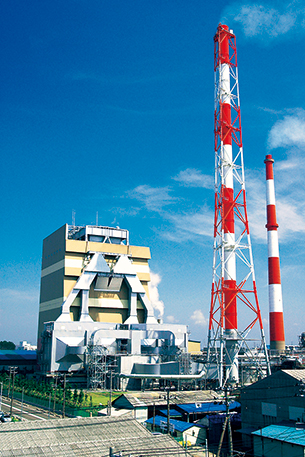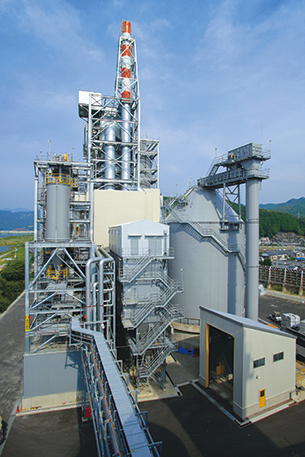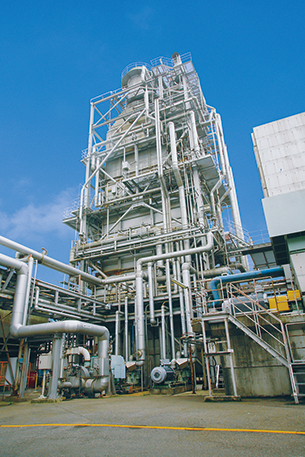Measures to combat global warming
1. Use of biomass energy
Biomass refers to renewable organic resources derived from organisms, and the energy obtained from biomass is called biomass energy. Biomass absorbs CO2 as it grows, so even if it is burned, the amount of CO2 in the atmosphere does not increase as a result. Black liquor extracted in the process of making pulp, the raw material for paper made from wood chips, is also classified as biomass energy.
 Niigata Mill
Niigata Mill
Blackliquor recovery boiler
 Kishu Mill
Kishu Mill
Wood biomass boiler
In 2017, the Pulp Business contributed to the profits of the entire Group, with significant results that exceeded 2016 totals backed by higher sales prices due to the recovery in market conditions, increased sales as a result of higher production, and lower manufacturing indirect costs.
Production-wise, we strive to stabilize and improve our day-to-day output, and are working to maximize production by considering optimization of the periodic maintenance interval.
As demand for printing and writing paper continues to decline, we are aggressively working on technical support for household paper, such as tissue paper, and specialty paper manufacturers to diversify our pulp sales. Furthermore, we will do our utmost to have customers appreciate the quality and value of Al-Pac products by offering FSC® (Forest Stewardship Council) certified products etc. and diversifying our sales customers, leading to growth.
2. Promoting the use of gas
We use fossil fuels for energy that cannot be covered by biomass energy alone, and among these, we promote the use of gas with low CO2 emissions. Our Kanto Mill (Ichikawa) first started gas power generation in 1995. Following that, we installed a gas turbine at the Niigata Mill, and converted the all boilers at the Nagaoka Mill to run on gas.
 Kanto Mill(Ichikawa)
Kanto Mill(Ichikawa)
Gas heat exhaust boiler